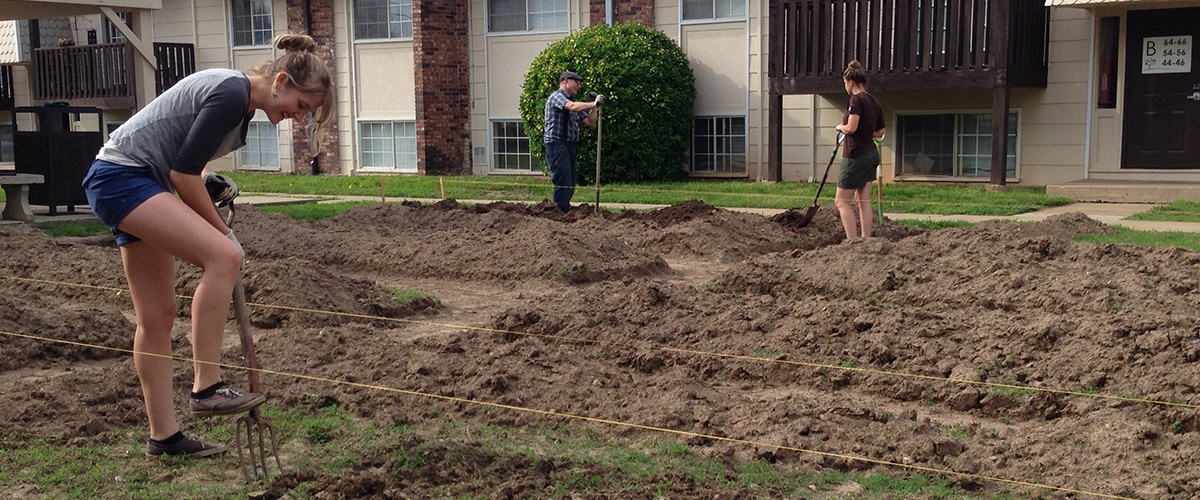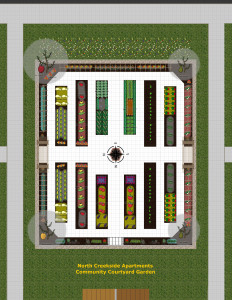
Building Healthy Places with Community Gardens

Our partners at Tri-Cycle Farms designed a plan for a community garden at North Creekside Apartments that will eventually include fruit trees.
The scent of basil, warm from the sun.
The taste of a perfectly ripe tomato.
The joy of digging in the soil.
As more and more Americans discover the pleasure of gardening, a home garden remains out of reach for most people who live in a conventional apartment setting. Last year, we set out to change that for residents of North Creekside Apartments. North Creekside is a 195-unit property with a diverse mix of residents ranging from families with young children to undergraduates to international graduate students. Over the winter, we partnered with Tri-Cycle Farms, a non-profit urban farm, to plan a community garden at North Creekside. Our staff, neighbors at North Creekside, and the experts from Tri-Cycle designed a garden plan, prepared beds, amended the soil, and planted a garden in a formerly unused area between buildings.
The garden is producing peppers, okra, herbs, carrots, and tomatoes, but we are harvesting more than produce. Our managers have watched friendships grow in the garden, prospective renters have signed leases, and residents have renewed leases because of the program. We plan to document this program with the intention of replicating it in other multifamily settings.
We haven’t worked out all the details yet, but we are planning a large community garden and orchard at our new Uptown development. The urban agriculture area will be adjacent to the Razorback Greenway access point.
Enjoy this timelapse photography of the new garden at North Creekside Apartments.
This spring, Urban Land Institute released the Building Healthy Places Toolkit, exploring 21 evidence-based recommendations for improving public health through land use practices. This series highlights the Building Healthy Places recommendations, examining our current properties and practices, and identifying ways that we can push ourselves to create more healthy communities.
Building Healthy Places Recommendation #12 Support on-site gardening and farming
COMMUNITY GARDENS, edible landscaping, and small farms grow produce that can make a healthy diet more accessible. Participation in community gardening activities can increase consumption of fruits and vegetables, and when community members come together around the growing of food, the interaction promotes social bonds and connections. Local produce helps reduce pollution associated with shipping food long distances.
In recent years, gardening has enjoyed a growing popularity, a trend that is likely to continue. Small farms can take the place of golf courses as community centerpieces, can cost less on an upfront and ongoing basis, and can provide community members with fresh, locally grown food.
—Building Healthy Places Toolkit: Strategies for Enhancing Health in the Built Environment, Urban Land Institute, 2015


